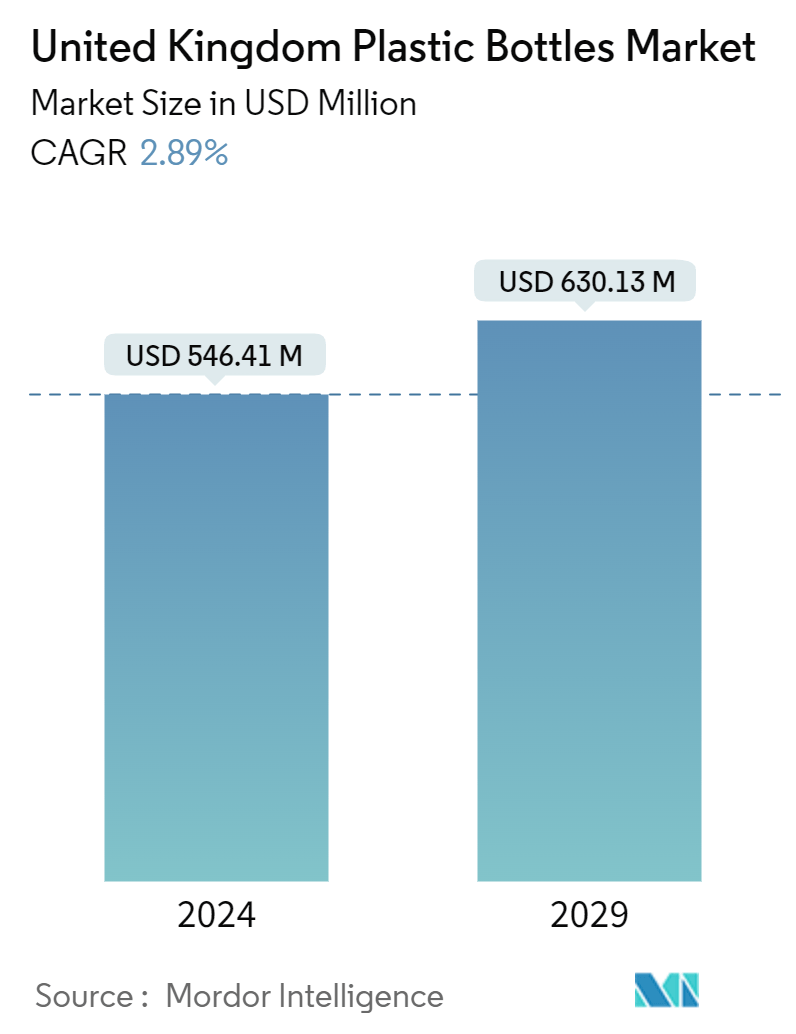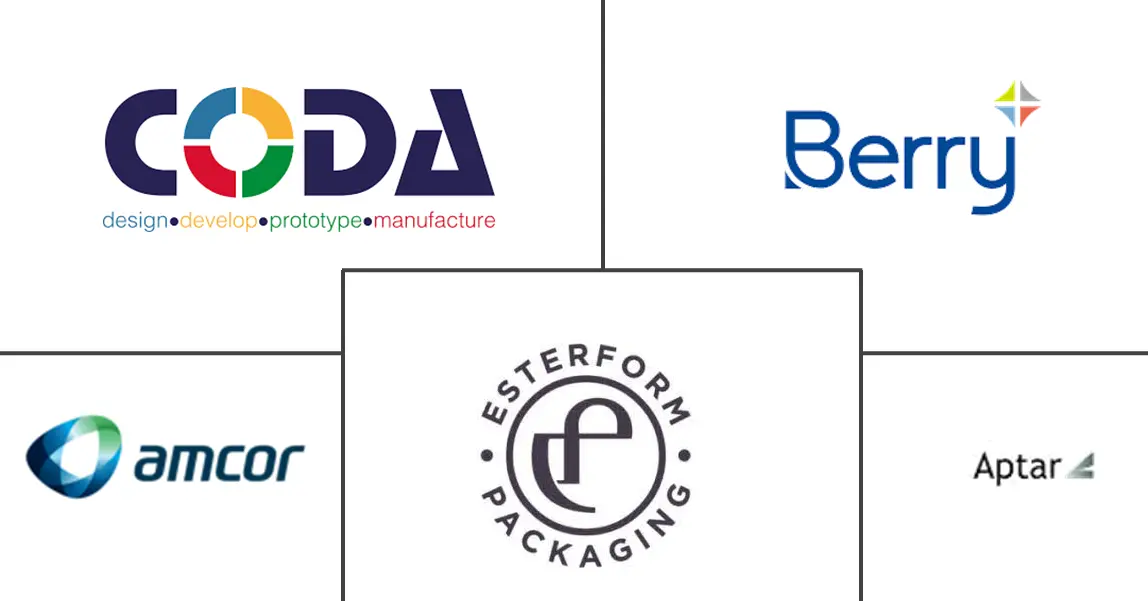Market Size of United Kingdom Plastic Bottles Industry

| Study Period | 2019 - 2029 |
| Base Year For Estimation | 2023 |
| Market Size (2024) | USD 546.41 Million |
| Market Size (2029) | USD 630.13 Million |
| CAGR (2024 - 2029) | 2.89 % |
| Market Concentration | Medium |
Major Players
*Disclaimer: Major Players sorted in no particular order |
United Kingdom Plastic Bottles Market Analysis
The United Kingdom Plastic Bottles Market size is estimated at USD 546.41 million in 2024, and is expected to reach USD 630.13 million by 2029, growing at a CAGR of 2.89% during the forecast period (2024-2029). In terms of production volume, the market is expected to grow from 592.11 thousand tonnes in 2024 to 698.86 thousand tonnes by 2029, at a CAGR of 2.74% during the forecast period (2024-2029).
- Consumption patterns of bottled water and soft drinks heavily shape the plastic bottle landscape in the United Kingdom. These beverages drive the United Kingdom's plastic bottle usage, fueling the demand for single-use plastics. The convenience and portability of bottled drinks have made them a consumer favorite, leading to a surge in plastic bottle production. This trend intensifies with the growing preference for on-the-go consumption, spurred by busy lifestyles and a diverse range of beverage options.
- United Kingdom consumers show a pronounced preference for bottled drinks, with bottled water consumption notably rising in recent years. This shift is largely attributed to health-conscious individuals choosing water over sugary drinks. Nonetheless, soft drinks maintain their popularity, with a substantial segment of the population consuming them regularly. This dynamic has resulted in a diverse market catering to both health-focused and indulgence-oriented consumers and sustaining the demand for plastic bottles.
- According to InSinkErator, the United Kingdom purchases a staggering 7.7 billion bottles of water annually. A recent study highlights that Londoners account for nearly one-seventh of this plastic pollution. This translates to approximately 1.54 billion bottles of water bought each year, averaging 175 bottles per person. Given Birmingham's status as the country's second-largest city, its annual water bottle purchases exceed 120 million.
- The United Kingdom market showcases a variety of plastic bottles, prominently featuring polypropylene (PP), high-density polyethylene (HDPE), and polyethylene terephthalate (PET). PET reigns supreme for beverage bottles, prized for its lightweight nature, strength, and clarity, making it the go-to for both carbonated and non-carbonated drinks. HDPE holds its ground, especially for milk and juice bottles, owing to its durability and barrier properties. While PP is less frequently used in beverages, it remains a staple in other packaging domains.
- Environmental concerns surrounding plastic bottles are escalating in the United Kingdom, especially regarding their ecological footprint. A significant chunk of the country's plastic waste, largely stemming from single-use bottles, raises alarms. Addressing these sustainability challenges, the country has rolled out several initiatives to curb plastic waste. One notable measure is the introduction of deposit return schemes (DRS), which incentivize recycling by offering refunds on returned bottles. There is an emphasis on boosting recycled content in plastic bottles and pioneering biodegradable and compostable alternatives. These initiatives align with a broader strategy to foster a circular economy, emphasizing material reuse and recycling to mitigate environmental harm.

